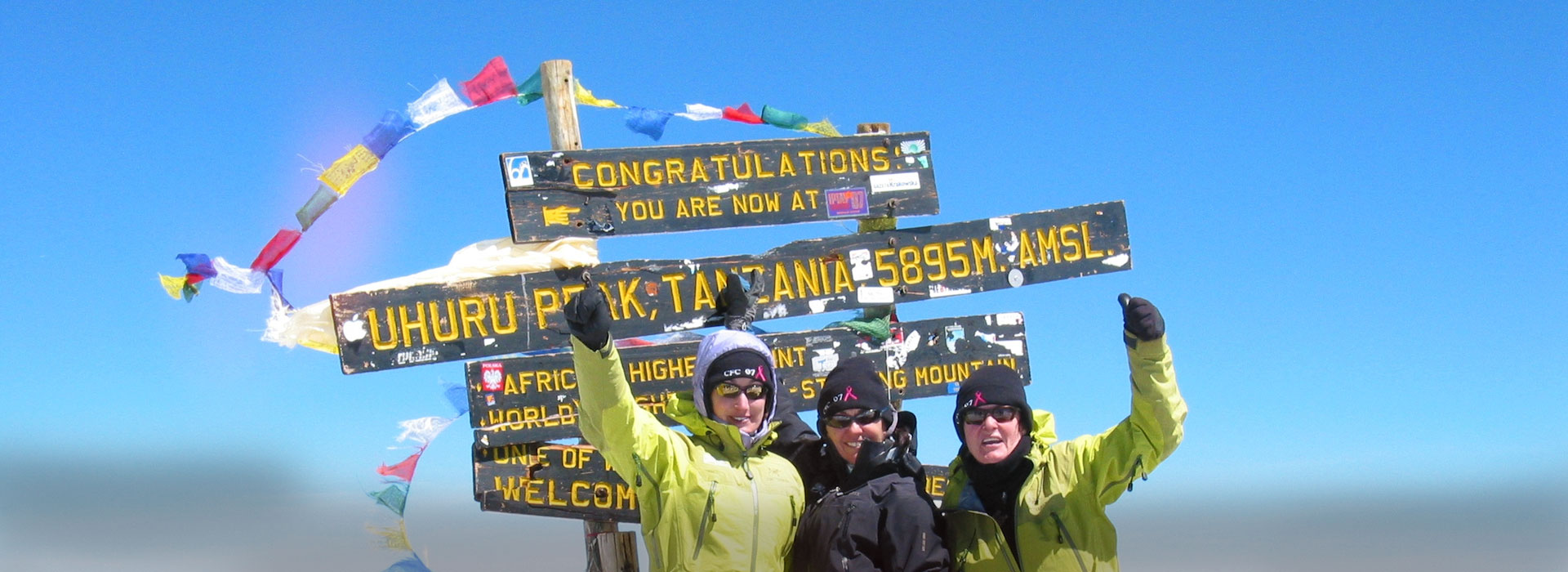
Kilimanjaro is the highest mountain in Africa. With all the information you have, added to being physically prepared, your chances of reaching the summit is substantially increased. The tests of physical endurance and mental stamina will determine, to great extend, whether you will be successful in your quest to conquer the Roof of Africa. Being physically prepared for the trek will also greatly contribute and make a world of difference to the most valuable benefit of your preparation– your mental confidence and strength!
The type of fitness is more important than the degree of fitness. Kilimanjaro is a hike, so the best preparation you can do, is to hike, preferably under simulated conditions. While running helps to some degree, it does not fully prepare your muscles for a strenuous 6-day hike. We suggest that you spend some of your training time by simply walking. Going for walks, in addition to regular gym work in order to also stimulate some muscle development, has proven to be the most successful preparation. Try to do a one or two day local hiking trial in your area, which will not only be an excellent way of preparation, but also most enjoyable.
We have therefore developed a practical (in terms of time and costs) fitness preparation guideline, which we will assist you greatly in preparing your body for your Kilimanjaro summit attempt. This guideline contains both a gym as well as a hiking program which should be followed simultaneously over an 8 week period.
Before embarking on a fitness program, it is always wise to seek the approval of your family doctor. By all means show him this program so that he can see exactly what you are talking about. Chances are that he will be delighted that you will be exercising regularly.
In essence this gym fitness program consists of regular performance of progressive resistance exercises with either free weights (barbells and dumbbells) or free weight machines as found in gymnasiums. The idea behind progressive resistance is that your exercise can be tailored to your age, conditioned and strength and progressing to higher resistance or weights as you develop.
Because progressive resistance movements are tailored to your strength levels the program is potentially safe. However it is essential that all the exercises are performed correctly and that the basic safety procedures are followed. It is always a good idea to invest in a book on physical fitness or to ask the local gymnasium instructor to show you how to perform each exercise correctly and safely.
You should always warm up your muscles before any exercising routine. This means putting your body through a variety of stretches to warm up, strengthen and progressively challenge the tendons, ligaments, joints and muscles. Stretching is very important; it’s the best way to prepare yourself for an injury-free workout.
It is advisable to go for frequent walks which should include some uphill and down hills sections. Take your daypack with you and carry at least three litres of water or three kilograms with you. This will simulate the conditions you will encounter. As mentioned before, doing a one or two day local hiking trial in your area is not only an excellent way of preparation but also most enjoyable. We have developed an adequate hiking program of least 8 weeks to ensure an adequate level of fitness.
If your local weather conditions do not always permit outdoor activities, you can do part of it on a treadmill and simulate the flat, uphill (inclined) and downhill (declined) sections. Terminate your hiking program at least 4 days before you’re the start of your summit attempt to ensure sufficient rest before the climb.